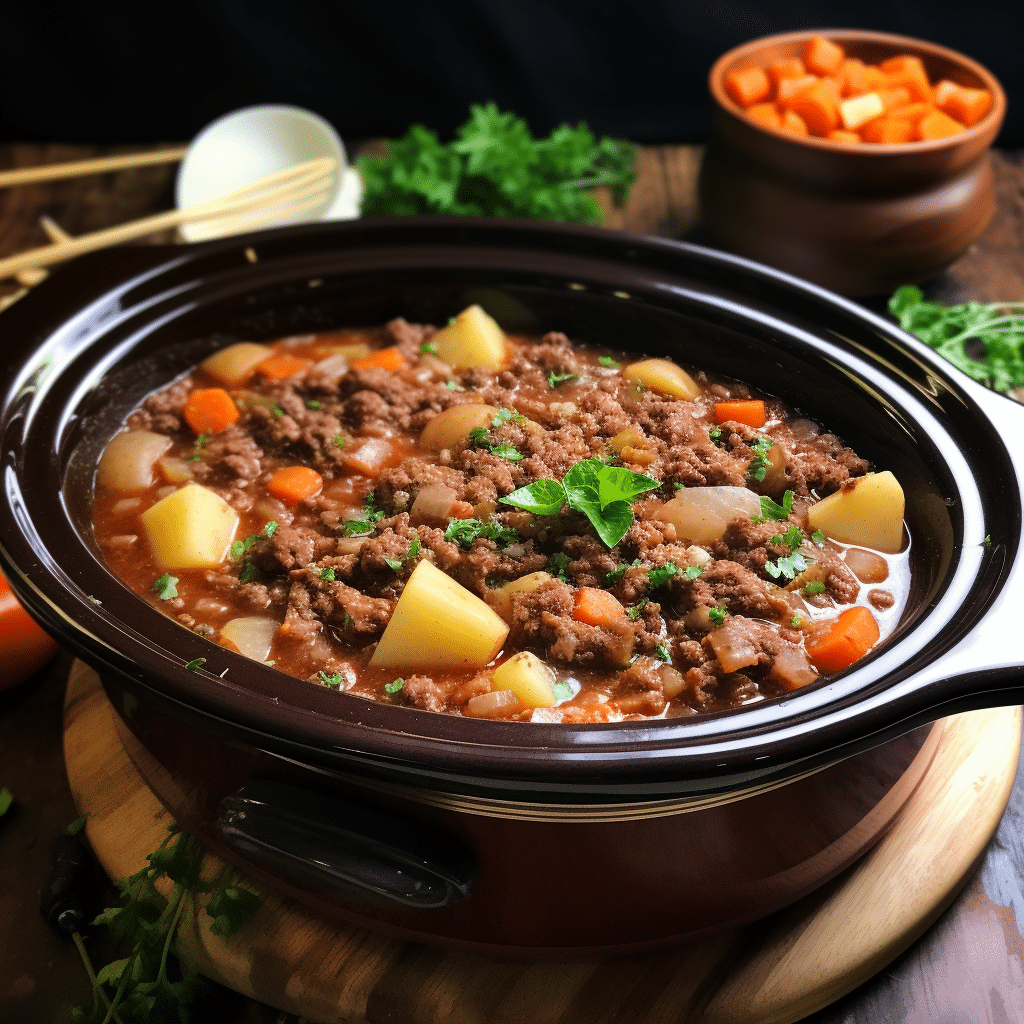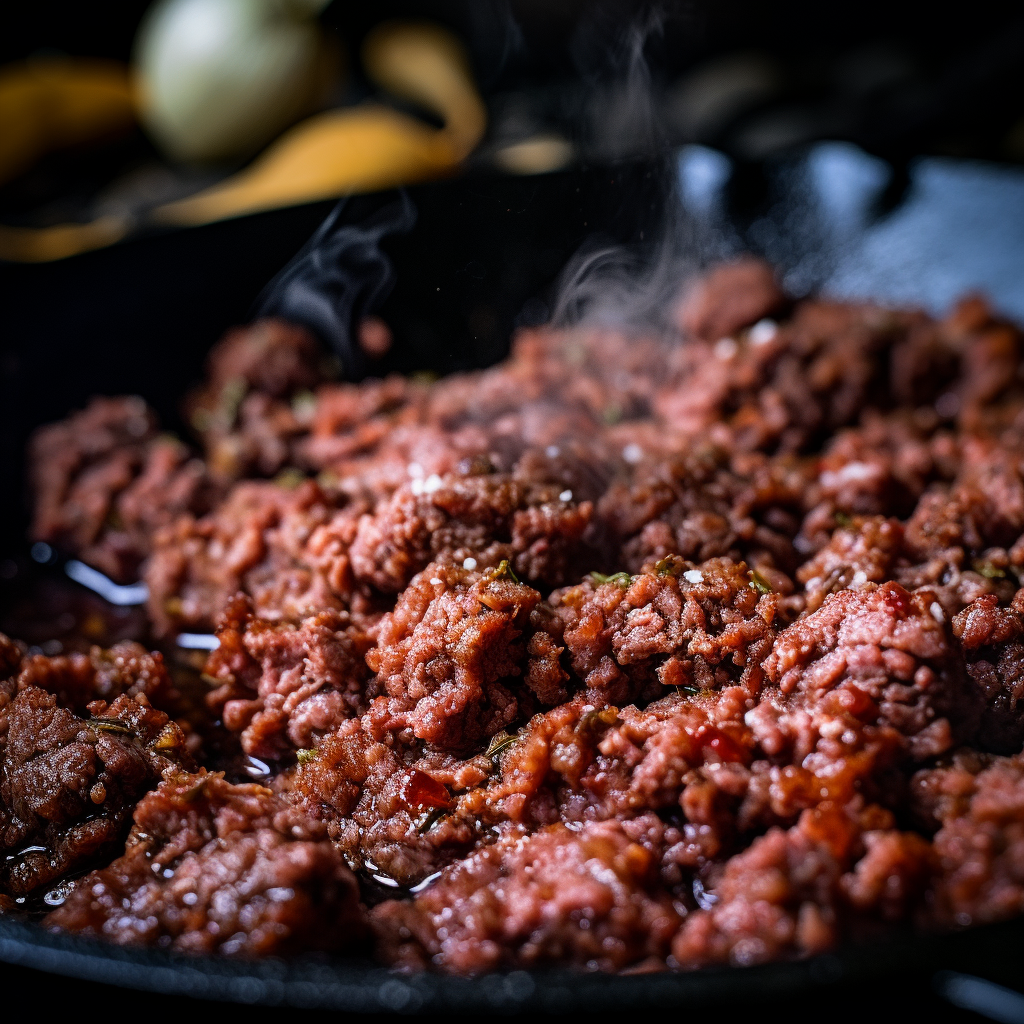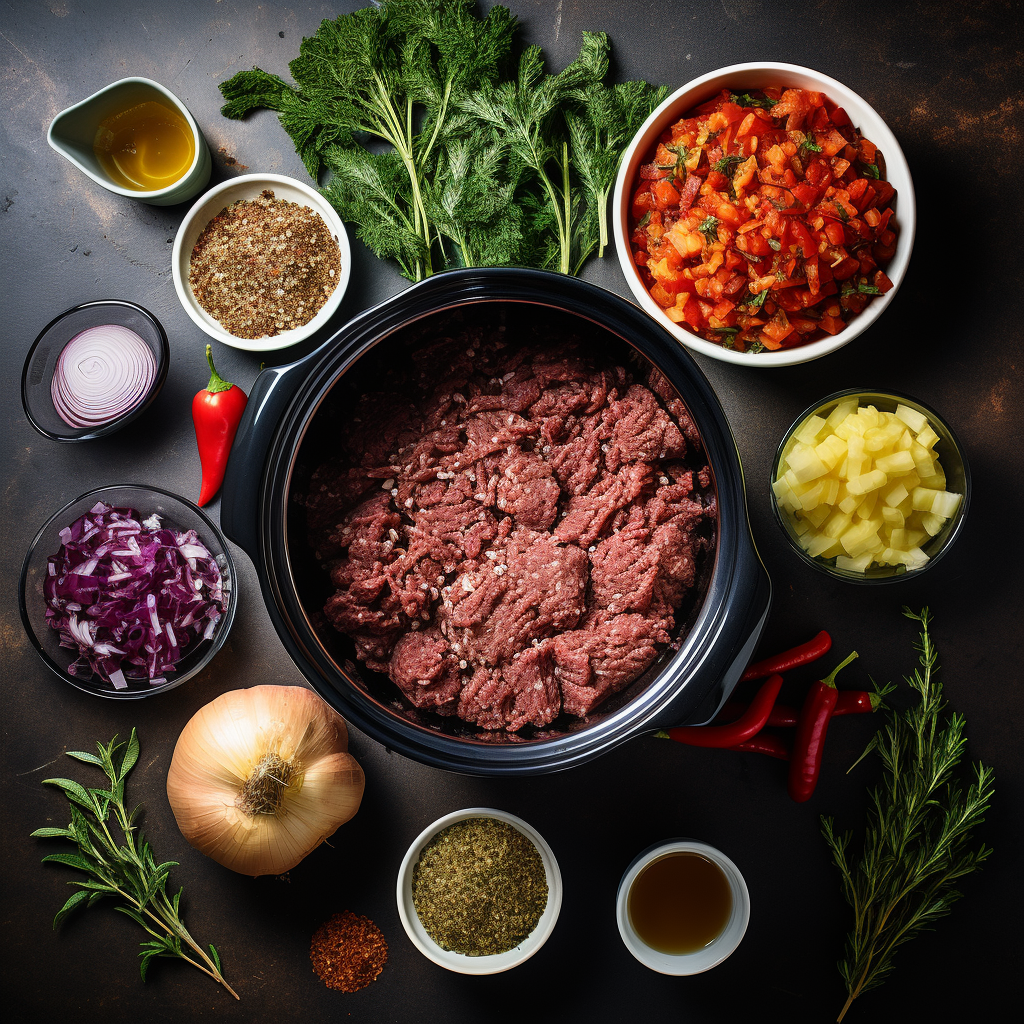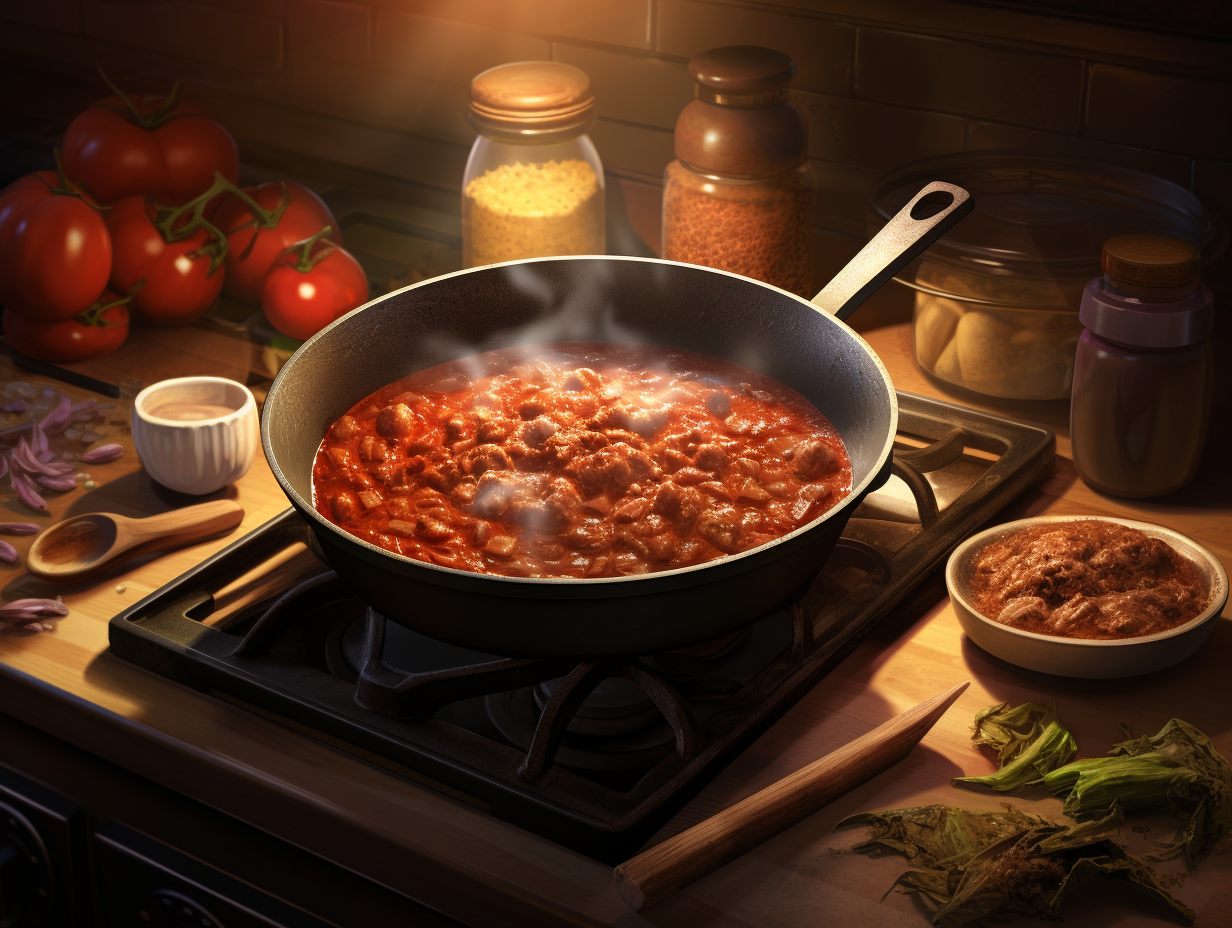Introduction
Slow cookers have revolutionized home cooking by offering convenience without compromising flavor. Whether you’re preparing chili, beef stew, or any hearty meal, slow cookers make it easy to put a meal together with minimal hands-on time. One question that frequently arises when using ground beef in slow cooker recipes is: Should you brown ground beef before slow cooking?
Browning ground beef, also known as searing, can seem like an unnecessary step, especially when you’re pressed for time. However, it can add significant depth of flavor and better texture to your meals. In this comprehensive article, we’ll explore the importance of browning ground beef before slow cooking, the science behind it, and when it’s worth the extra effort. By the end, you’ll be equipped with the knowledge to decide for yourself whether this step is essential for your cooking.
Why Browning Ground Beef Matters
When ground beef is browned before being added to the slow cooker, it undergoes the Maillard reaction. This reaction is a chemical process between amino acids and reducing sugars that occurs at high heat, giving browned foods their distinctive, rich flavor. The result is a deeper, more savory taste that enhances any dish.
The Science Behind Browning
Browning meat before slow cooking changes not only the flavor but also the texture. Ground beef, in particular, can benefit from this technique because it helps prevent the meat from becoming too soft or mushy during the long, slow cooking process.
By searing the beef, you are caramelizing its exterior, locking in the juices, and adding layers of complex flavors that simply can’t be achieved when cooked solely in the moist, low-temperature environment of a slow cooker.
- Flavor Development: The Maillard reaction creates hundreds of new flavor compounds, contributing to the beef’s savory taste. This flavor development is especially important in dishes like stews, chilis, and sauces.
- Texture: Browning gives ground beef a firmer texture, helping it hold up better in slow-cooked dishes. Without browning, the beef can sometimes become too soft or even grainy.
Benefits of Browning Ground Beef Before Slow Cooking

1. Richer, More Complex Flavors
The Maillard reaction is the key to flavor enhancement. When ground beef is browned, it gains a depth of flavor that simply can’t be replicated through slow cooking alone. The rich, meaty notes and slightly caramelized exterior of the meat are what make dishes like beef pot pie or beef chili stand out.
For slow cooker recipes where the meat is the star of the dish, browning the ground beef before slow cooking is essential. Consider browning the beef for dishes such as hearty beef and leek soup for a deeper, richer broth and a more satisfying meal.
2. Better Texture and Presentation
Browning ground beef creates a firmer, more appealing texture. Slow cookers are great for tenderizing meat, but ground beef can sometimes become mushy or too soft during the slow cooking process. Browning the meat beforehand helps it retain its structure and makes it visually more appealing, which is important for dishes like meatloaf, casseroles, or beef enchiladas.

3. Fat Reduction
When you brown ground beef, you’re able to drain off the excess fat. Slow cooking raw ground beef without browning it first can result in greasy dishes, especially if you’re using a fattier cut of beef. By browning and draining the fat, you’re left with a leaner, healthier meal.
When to Brown Ground Beef Before Slow Cooking
While browning ground beef is often recommended, it’s not always necessary. Here’s when you should definitely consider browning your beef:
Browning Is Essential For:
- Dishes Where Ground Beef Is the Star
For recipes where ground beef is the main ingredient, such as in chili, tacos, or meatloaf, browning is key to enhancing the flavor and ensuring the meat doesn’t fall apart during the cooking process. In these dishes, the flavor and texture of the meat are paramount. - Hearty Soups and Stews
In soups and stews, like beef stew, browning the beef adds depth to the broth and helps the meat stand up to long cooking times without disintegrating. - Rich Sauces
When making bolognese or chili, browning the meat first allows you to deglaze the pan, capturing all those flavorful browned bits (fond) left in the pan. This will create a sauce that’s more complex and flavorful. - Flavor-Forward Dishes
Any dish where the flavor of the beef needs to shine will benefit from browning. For example, in slow cooker lasagna or casseroles, browning the beef first adds that extra layer of savory richness that takes the dish from good to great.
When It’s Okay to Skip Browning
Not every dish requires the browning step. Here are situations where you can skip it:
1. Dishes Where Texture Isn’t Important
If the texture of the ground beef isn’t crucial to the success of the dish, you can get away with skipping browning. For example, in dishes like lasagna or casseroles, where the beef is mixed with other ingredients, the overall texture of the dish may not suffer from skipping the browning step.
2. If You’re Short on Time
Let’s face it: browning takes time. If you’re in a rush, it’s okay to skip this step for dishes that have other strong flavors. For instance, in a highly spiced chili or curry, the seasoning might be enough to carry the dish without the extra flavor that comes from browning.
3. If You Want a Softer Texture
Some dishes call for a softer texture, and browning can make the meat too firm. If you prefer your ground beef to have a softer, more tender consistency, you may want to skip browning.
How to Properly Brown Ground Beef Before Slow Cooking

Browning ground beef may seem simple, but there are a few techniques that can make the process quicker and more effective.
Step-by-Step Guide to Browning Ground Beef
- Preheat the Pan: Use a large, heavy-bottomed skillet or frying pan. Preheat the pan over medium-high heat for several minutes to ensure it’s hot enough. A hot pan is key to getting a good sear.
- Add the Beef: Add the ground beef in small batches to avoid overcrowding the pan. Overcrowding can cause the beef to steam instead of searing, which prevents the Maillard reaction.
- Season the Beef: Add a pinch of salt and pepper, or any other seasonings you prefer, to enhance the flavor during the browning process.
- Break Up the Meat: Use a spatula to break the meat into smaller chunks, allowing more surface area to come into contact with the hot pan.
- Don’t Stir Too Much: Let the beef sit in the pan for a few minutes without stirring to allow one side to brown properly. After a few minutes, stir and continue cooking until all sides are browned.
- Drain the Fat: Once the beef is browned, drain off any excess fat. This step is particularly important if you’re using a fattier cut of ground beef.
- Transfer to Slow Cooker: Add the browned beef to your slow cooker, along with the rest of your ingredients, and continue with your recipe.
Alternatives to Browning Ground Beef
If you’re short on time or just want a simpler way to achieve the same depth of flavor, here are a few alternatives to browning ground beef:
1. Broil the Beef
Instead of browning on the stovetop, you can use your oven’s broiler. Spread the ground beef evenly on a baking sheet and place it under the broiler for 3-5 minutes, or until browned. This method saves time and prevents the need for constant attention.
2. Use Pre-Browned Ground Beef
Some grocery stores sell pre-cooked or pre-browned ground beef. While it may not be as flavorful as freshly browned meat, it’s a quick and convenient alternative for those days when time is limited.
3. Use a Searing Slow Cooker
Some slow cookers come with a searing option, allowing you to brown the meat directly in the slow cooker insert. This eliminates the need to dirty another pan and makes the process more streamlined.
4. Deglazing for Flavor
If you’re skipping the browning process, consider deglazing your pan with a bit of broth or wine after cooking other ingredients like onions or garlic. Deglazing will allow you to capture some of the flavors that would have developed during browning and incorporate them into your dish.
Frequently Asked Questions
1. Is Browning Ground Beef Necessary for All Slow Cooker Recipes?
No, browning is not necessary for all recipes. It enhances the flavor and texture of dishes where ground beef is a key ingredient, but in some dishes, it can be skipped without much impact.
2. Can I Brown Ground Beef in Advance?
Yes, you can brown ground beef ahead of time. After browning, store it in the refrigerator for up to three days or in the freezer for up to three months. This makes meal prep easier, as you can add the pre-cooked beef directly to the slow cooker.
3. Does Browning Ground Beef Make the Dish Healthier?
Browning the beef allows you to drain off excess fat, which can make the dish leaner and less greasy. However, browning itself does not make the dish significantly healthier.
Experiment with Browning: The Final Verdict
Deciding whether to brown ground beef before slow cooking is ultimately a matter of personal preference and the specific dish you’re preparing. Browning ground beef enhances flavor and texture, but it’s not always necessary for every dish.
For instance, try making a beef chili both with and without browning the beef. Compare the results and see which version you prefer. Similarly, in dishes like chuck roast recipes, browning will add richness and complexity to the final dish.
Through experimentation, you’ll discover when browning is worth the extra effort and when it’s okay to skip it.

